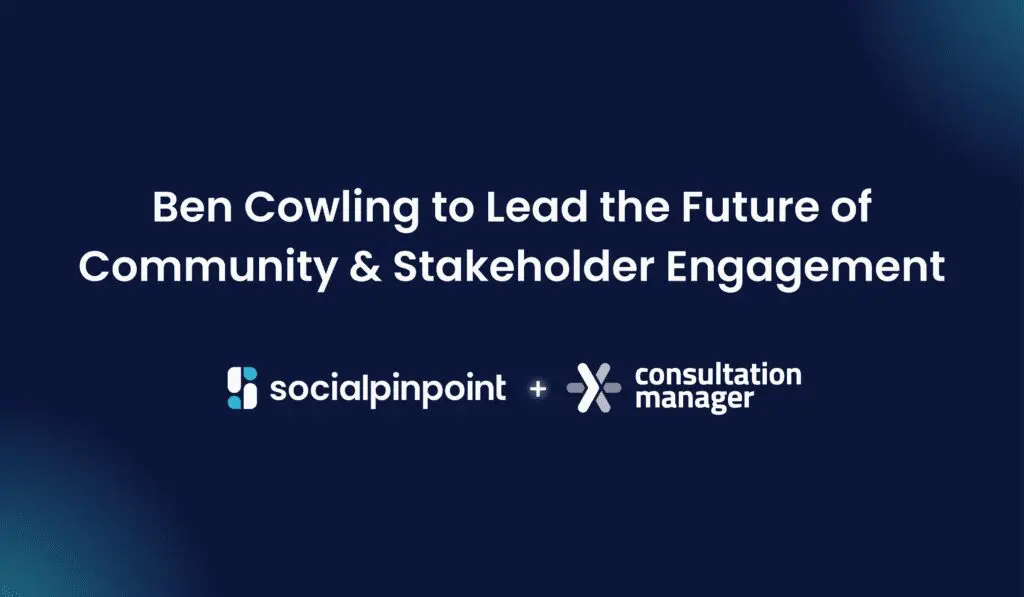In 2023, people expect to have their say. Actively involving the public in a deliberative dialogue to inform decision-making is becoming (almost) essential in democratic nations. But, there are a lot of different terms that allude to this practice.
From community engagement, community consultation, public participation, public involvement, civic engagement, public engagement, and citizen participation – it’s a varied mix. Let’s define these similarities and differences together.
In an ideal world, “engagement”, “participation”, and “involvement”, would mean the exact same thing and could be easily interchanged. But, there’s a whole variety of factors in play here that can not only group these phrases together but also pit them oceans apart.
To be honest, some of these subtle differences truly depend on the geography and audience. If you’re based in Canada, or Australia, or even the United Kingdom, you may have a preferred term that could be interchanged with some of these definitions.
It can also depend on the context, organization, or industry as well as the level of influence the public has within the consultation.
Understanding both the similarities and differences of these terms can help us pinpoint what type of involvement or influence the public may have.
So, let’s start with one of our favorites, community engagement.

What is community engagement?
The word “community” describes groups of people, whether they are stakeholders, interest groups, or citizen groups. A community may be based in a geographic location or formed around people of similar interests, affiliations, or identities.
Community engagement refers to the intention and action of organizations to reach out, facilitate interactions, and create feedback channels with a community. Governing bodies and organizations practice community engagement when they need to make a change or regulatory decision that will impact the community.
Some of our favorite client definitions of community engagement include:
“Community engagement is a process in which the community has a role in Council’s decision-making process. For Council decision-making to be an effective, transparent and accountable process, decisions are made by weighing and balancing community expectations with other factors”. – City of Boroondara, Community Engagement Policy, 2021 – 2026
“Community engagement is a planned process with the specific purpose of working with individuals and groups to encourage active involvement in decisions that affect them or are of interest to them.” – City of Melbourne, Community Engagement Policy, 2021
“Community engagement is a planned process that supports public decision-making. It includes: Sharing information and providing updates; Seeking feedback and gathering input; Dialogue and deliberation.” – City of Casey, Community Engagement Policy, 2020
With community engagement, there is a greater emphasis on a two-way dialogue or process. It is not simply about sharing information or listening to opinions via a focus group or survey. Rather, it is an ongoing partnership with communities to engage them in joint decision-making.
Fortunately, this leads to an increase in trust and empowerment as community members are shown, through an ongoing conversation, that their insights, experience, and feedback can ultimately shape the future.
How does community consultation fit in?
In recent years, the term community consultation has definitely taken a backseat to community engagement. Community consultation can be defined as a process where an organization exchanges information and feedback on issues to involve the community and seek their views.
As organizations continue to focus on building an ongoing, deliberative, two-way dialogue with their “community” of interest, the term consultation almost feels too singular. It doesn’t encapsulate the ongoing conversation and relationship-building that occurs when engagement is consistent, accessible, and transparent.

What is civic engagement or citizen engagement?
Civic or citizen engagement is the way in which citizens engage with their governing organizations and is a core element of democracy. Similar to community engagement, civic or citizen engagement is intended to improve the quality of life in one’s community by addressing wider social issues of public concern.
Acts of civic engagement can usually take several forms including individual volunteerism, engaging in community-wide projects, and participation in democratic processes.
The New York Times have also defined civic engagement as:
“Working to make a difference in the civic life of our communities and developing the combination of knowledge, skills, values and motivation to make that difference. It means promoting the quality of life in a community, through both political and non-political processes.”
Ultimately, it does seem that civic engagement has larger roots in wider social issues. It includes both paid and unpaid forms of political activism, environmentalism, and community and national service. And volunteering, national service, and service-learning can all be deemed forms of civic engagement too.
Now… this is where things can get tricky.
You see, civic engagement is also used interchangeably with community engagement in certain settings as well. So, if your definition of “civic engagement” is much more attuned to “community engagement” then you’re 100% correct too.

What is public engagement, public participation, or public involvement?
Public engagement, public participation, or public involvement are broader terms that describe any way in which the public engages with governments and organizations.
According to Intellitics, public engagement involves the process that brings people together to address issues of common importance, to solve shared problems, and to bring about positive social change. And, effective public engagement works to invite the public to be involved in deliberation, dialogue and action on issues that they care about.
“Public engagement is any process that involves the public in problem solving or decision-making and uses public input to make sustainable and enduring decisions. Public engagement includes all aspects of identifying problems and opportunities, developing alternatives and making decisions. It uses skills, knowledge and processes common to other fields that require interactions with people.” – City of Pittsburgh, Public Engagement Guide, 2019
Public engagement is multi-faceted and, as The National Co-ordinating Centre for Public Engagement states, “it is a term that is widely used in a variety of sectors, from arts and heritage to science policy and local government.”
So, you could say that public engagement, public participation, or public involvement are most likely used in industries and contexts that don’t only engage or involve a distinct group of citizens or communities in their participation process. But rather, there’s a varied mix of stakeholders in play, and the engagement is of more general public interest.
In saying that, and you guessed it, public engagement is also very similar to community engagement, and at times, there could be a preference to use one of these terms depending on the context.

What is the difference between community engagement, civic engagement, and public participation?
Before we understand what sets these definitions apart, it’s important we realize what goals unite them all.
Interestingly, there’s a common thread woven throughout all of these definitions. And this comes back to providing the opportunity for the public to have their say. From community engagement to public involvement, we’re allowing the public to contribute and ultimately, bring about positive change to solve problems.
So, what are the differences between these terms? And why does it matter?
You see, it is the level of engagement or participation that can set these apart. This is entirely dependent on the role an organization wants the public to have; this role helps determine how much influence the community has over planning or decision-making. And realistically, also determines how much influence and sway the public can have on future outcomes.
IAP2 illustrates this in their Spectrum of Public Participation as the model acknowledges that sometimes the organization will lead the engagement process, and sometimes the community will. It also describes who will be primarily responsible for implementing the actions that arise from the decisions made.
However, we still need to consider that at times that we don’t always have the choice to control what level of engagement or influence the public may have. It can be a difficult balance to maintain but by being open and transparent in your communications, and having a singular engagement hub to keep your stakeholders informed and up-to-date then you’re on the right path to mutual benefit.
What “community engagement” term should you use?
Do you tend to use a particular term more than others? Or do you use different terms depending on the project or situation? Let us know in the comments below.
We understand that sometimes the use of one term over another could have certain implications, especially if you’re working to build a trustworthy and transparent culture of continuous engagement with your community.
Because of this, people may find that some terms are conducive to their ability to have an impact on the project. It could be inhibiting your ability to truly connect as there is limited visibility over the community’s role and stake in the initiative. Is their participation really shaping the final outcome? Or has a decision already been made?
If you’re looking to build more trust with your community, then we recommend that you are honest about the role and influence that people have in decision-making, as well as the implementation of solutions. This means, that no matter what term you use, the community has clear expectations.
This article was originally published in 2017.












